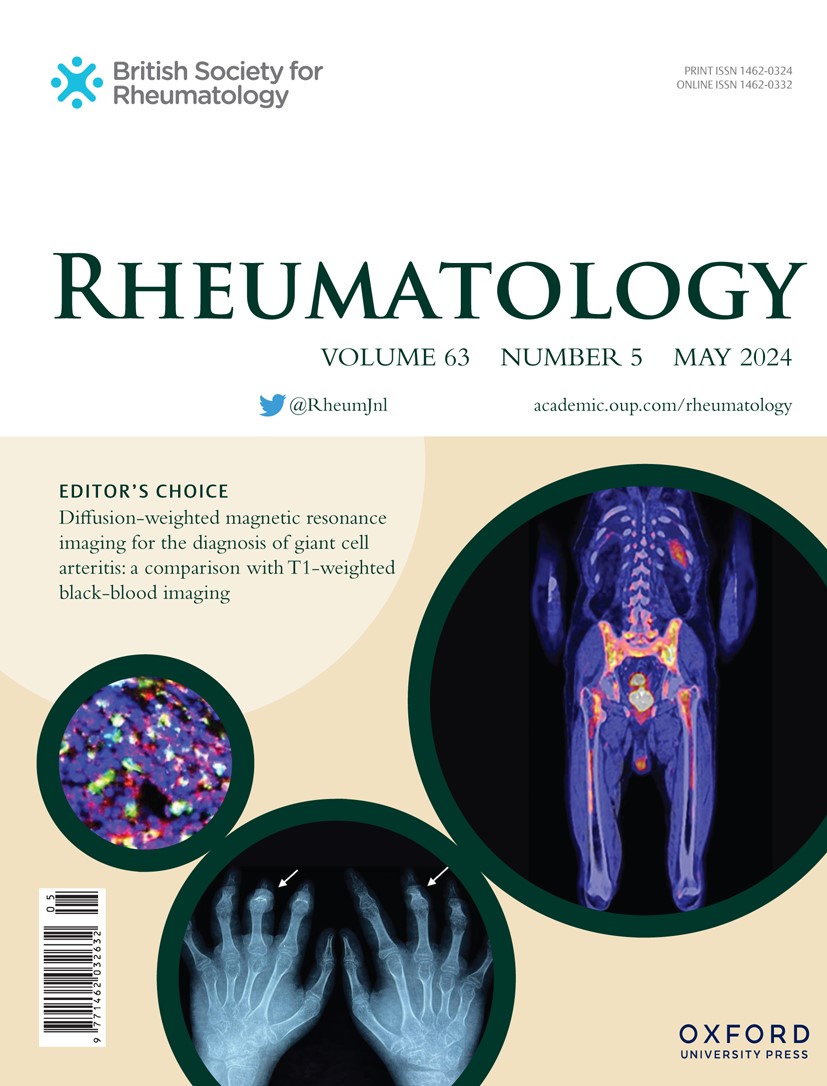NK cell cytotoxicity is markedly reduced in younger patients with rheumatoid arthritis treated with JAK inhibitors
IF 4.7
2区 医学
Q1 RHEUMATOLOGY
引用次数: 0
Abstract
Objectives This study investigated the impact of Janus kinase inhibitors (JAKi) on natural killer (NK) cell activity and phenotype in patients with rheumatoid arthritis (RA). While JAKi are effective in achieving low disease activity (LDA), preclinical and pharmacokinetic studies suggest potential effects on NK cells, raising concerns about infection and malignancy risks. However, the extent of these effects in RA patients remains unclear. Methods We assessed the cytotoxic activity of peripheral blood NK cells in RA patients with LDA who had been treated with JAKi (n = 85) or TNF inhibitors (TNFi) (n = 131) for more than three months using a 51Cr-release assay. Propensity score matching was used to adjust for confounders, and multivariable logistic regression identified risk factors for low NK cell activity. NK cell maturation and differentiation were evaluated via flow cytometry. Results NK cell activity was significantly lower in the JAKi group compared to the TNFi group (median 50% vs 36%, p = 0.002). The proportion of NK and CD56dim cells was reduced, while CD56bright cells were more abundant in the JAKi group. In the JAKi group, glucocorticoid use (odds ratio [OR] 5.36, 95% confidence interval [CI] 1.10-26.07, p = 0.04) and younger age (<50 years; OR 10.56, 95% CI 2.69-41.45, p < 0.01) were independent risk factors for reduced NK cell activity. Notably, herpes zoster incidence was significantly higher in the low NK cell activity group among RA patients younger than 50 years. Conclusion JAKi treatment significantly impaired NK cell activity and differentiation in RA patients, with age influencing these effects, underscoring important safety concerns.NK细胞毒性在JAK抑制剂治疗的年轻类风湿关节炎患者中显着降低
目的探讨Janus激酶抑制剂(JAKi)对类风湿关节炎(RA)患者自然杀伤细胞(NK)活性和表型的影响。虽然JAKi在实现低疾病活动性(LDA)方面有效,但临床前和药代动力学研究表明对NK细胞有潜在影响,引起了对感染和恶性肿瘤风险的担忧。然而,这些影响在RA患者中的程度仍不清楚。方法:采用51cr释放法评估了接受JAKi (n = 85)或TNF抑制剂(n = 131)治疗超过3个月的RA合并LDA患者外周血NK细胞的细胞毒活性。倾向评分匹配用于调整混杂因素,多变量逻辑回归确定了低NK细胞活性的危险因素。流式细胞术观察NK细胞的成熟和分化情况。结果与TNFi组相比,JAKi组NK细胞活性明显降低(中位数为50% vs 36%, p = 0.002)。JAKi组NK细胞和CD56dim细胞比例减少,CD56bright细胞比例增加。在JAKi组中,糖皮质激素的使用(优势比[OR] 5.36, 95%可信区间[CI] 1.10-26.07, p = 0.04)和年龄更小(50岁;OR 10.56, 95% CI 2.69-41.45, p <;0.01)是NK细胞活性降低的独立危险因素。值得注意的是,在年龄小于50岁的RA患者中,低NK细胞活性组的带状疱疹发病率明显更高。结论JAKi治疗明显损害RA患者NK细胞活性和分化,年龄影响这些作用,强调了重要的安全性问题。
本文章由计算机程序翻译,如有差异,请以英文原文为准。
求助全文
约1分钟内获得全文
求助全文
来源期刊

Rheumatology
医学-风湿病学
CiteScore
9.40
自引率
7.30%
发文量
1091
审稿时长
2 months
期刊介绍:
Rheumatology strives to support research and discovery by publishing the highest quality original scientific papers with a focus on basic, clinical and translational research. The journal’s subject areas cover a wide range of paediatric and adult rheumatological conditions from an international perspective. It is an official journal of the British Society for Rheumatology, published by Oxford University Press.
Rheumatology publishes original articles, reviews, editorials, guidelines, concise reports, meta-analyses, original case reports, clinical vignettes, letters and matters arising from published material. The journal takes pride in serving the global rheumatology community, with a focus on high societal impact in the form of podcasts, videos and extended social media presence, and utilizing metrics such as Altmetric. Keep up to date by following the journal on Twitter @RheumJnl.
 求助内容:
求助内容: 应助结果提醒方式:
应助结果提醒方式:


